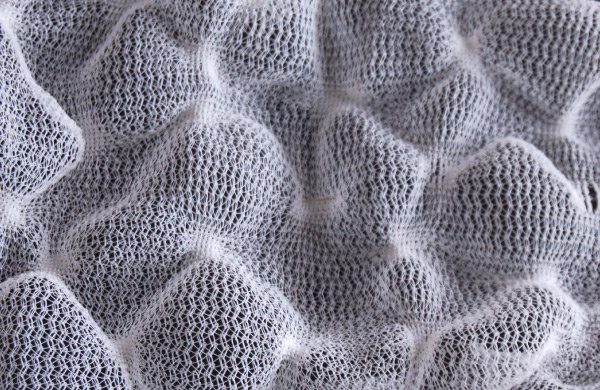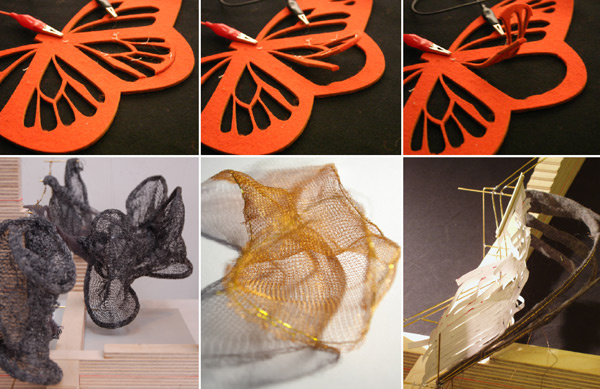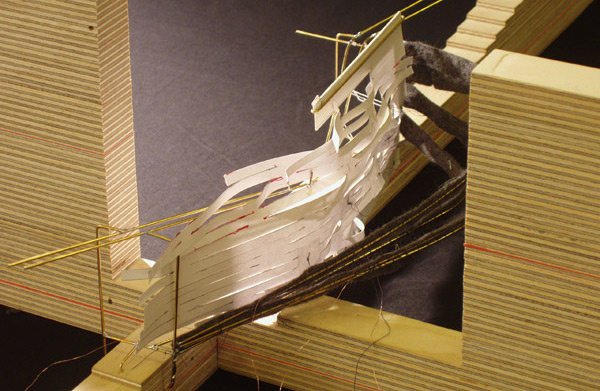Reactive Computations (2006-2007)

A workshop by CITA and The Danish Design School
Inter-institutional workshop with students from the School of Architecture and The Danish Design School, Textile Department. The course introduced the idea of state-changing materials in architecture. With a point of departure in active alloys (Smart Memory Alloys) students were taught in programmed materials and integrated electronic circuits into architectural models.
The workshop invited a cross disciplinary group of students from Department 2 and Textiles at Danmarks Design School to explore the embedding of reactive ‘smart’ materials into the bespoke membranes developed in the Knitted Skins work-shop.

The workshop explored the embedding of reactive ‘smart’ materials into the bespoke membranes developed in the Knitted Skins workshop. We explored the use of memory alloys in textiles structures. Memory alloys and are materials that can change shape as electrical current is passed through them. The material has an inherent resistance and as electricity is passed through it heats up. In this heated state it can be stretched or pulled to a different form and cooled to a stable state. When the material is heated up again it ‘remembers’ (releases stored up energy) its first state and returns to it.

The workshop questions how an architectural membrane can hold its own potential for behaviour or movement. How do we design its movement scores, its choreography? How do we imagine its reactive natures? What happens when what we wear and what we live in becomes interfaced to its context?
Part of Workshop Series Robotic Membranes with students from Department 2, Royal School of Architecture
and the Textiles Department, Danmarks Design School.

